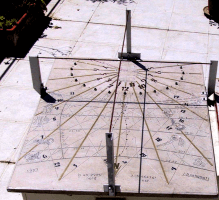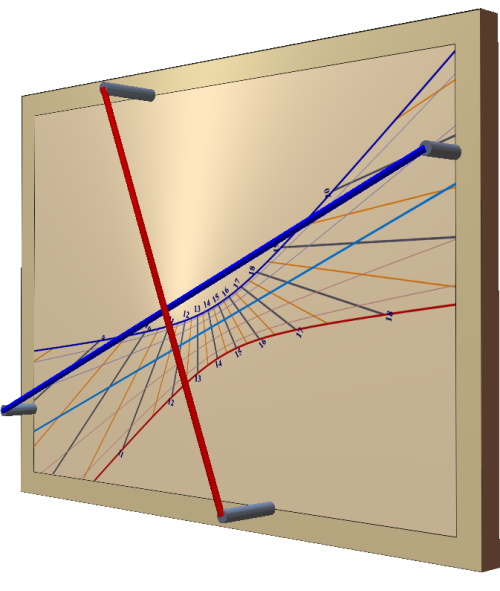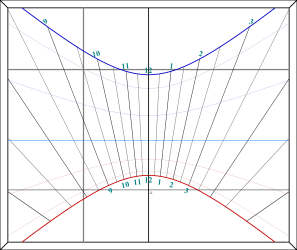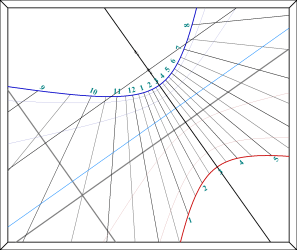The bifilar sundial replaces the style by two threads that cross at different height. This type of sundial was invented in 1922 by a German mathematician, Hugo Mitchnik. Bifilar sundials can be as diverse as classical sundial, with in addition to all variations introduced by the height of threads, or in some cases, their orientation.

Horizontal bifilar sundial by J. Pakhomoff.
The shadow of the two threads intersect on the sundial and define a point where time should be read. When changing the height and separation of the two threads, the layout of the sundial becomes more and more distorted.
Since the years 2000, new developments were carried out by gnomonists, such as D. Savoie and D. Collin in France, and new types of bifilar sundials were described with inclined threads of any orientation.

Vertical declining bifilar sundial (in Shadows)


Shadows Pro can be used to calculate horizontal and vertical bifilar sundials.
On the left, an horizontal bifilar sundial with crossed threads and their shadows casted for 9h30 of solar time. On the right, a vertical declining bifilar sundial, drawn for 10h30. Two types of vertical declining sundials are supported in Shadows, with vertical/horizontal threads, and with inclined threads.
Note: it is possible to cross the two threads at the same height, the sundial is then transformed to a classical sundial which gnomon is at the crossing point of the threads. It is sometimes easier to install precisely such a sundial with two threads than to perfectly align a polar style with the correct angle.
Continue with:
- Understanding sundials
- Plane sundials with a polar style
- The analemmatic sundial
- Cylindrical sundials
- Photos of sundials
- Sundial makers
- Bibliography on sundials
Photos:
- bifilar sundial (left): sundial made by Jean Pakhomoff